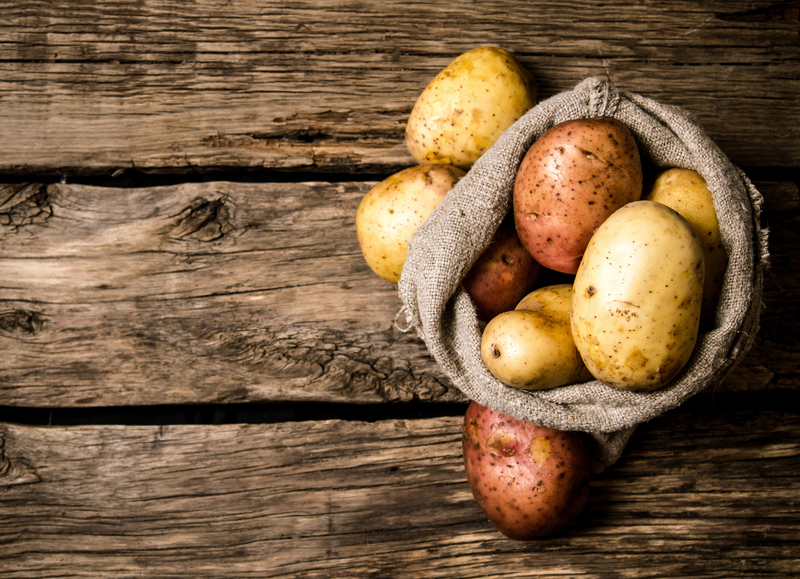Living Aromatics: Your DIY Herb Garden Adventure
Posted on 26/08/2025
Living Aromatics: Your DIY Herb Garden Adventure
Imagine stepping into your kitchen, reaching for a sprig of vibrant basil or a pinch of fragrant rosemary, and knowing it was grown right there at home. Living aromatics not only enliven your favorite dishes, but they also purify the air, beautify your space, and save money. Whether you're an urban dweller with a windowsill or a homeowner with a sunny backyard, creating your own DIY herb garden is an adventure everyone can embark upon.
The Benefits of a Homegrown Herb Garden
Cultivating your own herb garden delivers much more than just culinary flavor. Here are some compelling reasons to start your living aromatics journey:
- Freshness and Flavor: Herbs lose flavor quickly after harvest. Plucking them fresh means maximum taste and nutritional value.
- Green Savings: Buying fresh herbs can add up fast. A DIY herb garden is a one-time investment that pays off for months or even years.
- Healthier Cooking: With living aromatics nearby, you're inspired to experiment with healthy meals and use less salt, relying on natural flavors instead.
- Eco-Friendly: Growing your own reduces plastic waste and the carbon footprint of store-bought herbs.
- Mental Wellness: Studies show gardening reduces stress, boosts mood, and fosters a connection to nature.

Planning Your DIY Herb Garden Adventure
Start your living aromatics adventure with a little planning. Whether you have a sprawling yard or a modest balcony, choose the right space and select suitable herbs for your environment.
Choosing the Best Location
- Indoors: Windowsills, kitchen counters, or shelves near a sunny window (south or west facing is ideal).
- Outdoors: Balconies, patios, or garden beds that receive at least 4-6 hours of sunlight daily.
Tip: Some herbs will tolerate partial shade (like mint and parsley), while others (such as basil and thyme) crave full sun.
Selecting Your Living Aromatics: The Best Herbs to Grow
Choose herbs you use frequently, or those with unique fragrances you enjoy. Here are easy-to-grow options for your herb garden adventure:
- Basil: Aromatic, fast-growing, ideal for Mediterranean and Asian cuisines.
- Mint: Hardy and refreshing for teas, desserts, and cocktails. (Best grown in pots--mint spreads rapidly!)
- Rosemary: Woody, resilient, and beautifully fragrant. Perfect with roasted dishes.
- Thyme: Earthy flavors; thrives indoors or out, even with less water.
- Parsley: Brightens dishes and is rich in vitamins. Curly or flat-leaf is up to your preference.
- Chives: Mild onion flavor, great for garnishing salads and eggs.
- Cilantro (Coriander): Essential for salsas and curries, but prefers cooler weather.
- Sage: Contains powerful aromatic oils and is particularly savory with meats and vegetables.
Getting Started: Step-by-Step Guide to Your DIY Herb Garden
1. Choose the Right Containers or Garden Beds
- Indoors: Small pots (4-6 inches wide) with drainage holes are sufficient for most herbs.
- Outdoors: Use garden beds, raised planters, or window boxes. Ensure good drainage.
- Repurpose: Old mugs, tin cans, and wooden crates can make creative herb planters. Just add drainage holes!
2. Selecting Soil for Thriving Aromatics
Herbs prefer well-draining, nutrient-rich soil. Use a high-quality potting mix. You can enhance it with a bit of compost for extra nutrients. Avoid heavy, clay-rich soils that hold too much moisture.
3. Planting Your Herbs
- Seeds vs. Seedlings: Starting from seed is budget-friendly and offers variety, but seedlings give you a head start.
- Plant Depth: Follow the instructions on your seed packet or plant tag. Generally, seeds are sown 2-3 times their own depth.
- Spacing: Allow enough space for air circulation--usually 6 inches between small herbs, 12-18 inches for larger plants like rosemary.
4. Watering, Feeding, and Pests
Herb care is simple but requires consistency.
- Watering: Water when the top inch of soil feels dry. Avoid overwatering, which can rot roots.
- Feeding: Fertilize every 4-6 weeks with a gentle organic fertilizer or diluted compost tea.
- Pests: Herb gardens are less prone to pests, but watch for aphids or whiteflies. Treat with mild soapy water or neem oil if needed.
Best Practices for a Bountiful Living Aromatics Garden
Harvesting for Optimal Flavor
Regular harvesting encourages bushier, more productive plants. Pick leaves in the morning for the fullest flavor and aroma. Never remove more than one-third of the plant at once; this ensures continued growth.
Pinching, Pruning, and Deadheading
- Pinch off flower buds to prolong the leafy phase and prevent your herbs from going to seed too soon (called "bolting").
- With herbs like basil or mint, pinch off stems just above a set of leaves to encourage branching.
- Remove faded or yellowing leaves to keep your herb garden healthy and attractive.
Companion Planting and Design Tips
Mix complementary herbs for a beautiful, functional design. Here are some pairing ideas for your DIY herb garden adventure:
- Basil and tomatoes: They assist each other's growth. Basil also repels some pests from tomatoes.
- Chives with carrots or lettuce: Chives help deter aphids.
- Sage and rosemary: Both enjoy dry conditions and make a fragrant duo.
Indoor Living Aromatics: Year-Round Freshness
Lighting Tips for Indoor Herb Gardens
- Place herbs in the sunniest window available; otherwise, use a grow light for 12-14 hours per day.
- Rotate pots regularly so all sides get light and herbs grow upright.
- Clean windows to maximize natural sunlight exposure.
Managing Humidity and Airflow
- Indoor air tends to be dry; mist herb leaves occasionally if needed, or place a tray of water nearby.
- Ensure good airflow--use a fan briefly or open a window when possible.
Creative Uses for Your Homegrown Aromatic Herbs
A DIY herb garden yields more than just ingredients for home cooking. Explore these creative applications for your living aromatics:
- Flavorful Infused Oils and Vinegars: Add sprigs of rosemary or thyme to olive oil or vinegar bottles for custom infusions.
- Herbal Teas: Use fresh mint, lemon balm, or chamomile for soothing brews.
- Natural Air Fresheners: Simmer herbs like lavender and sage on the stove to scent your home.
- Bath Soaks: Add bunches of fresh herbs to your bath for a spa-like experience.
- Edible Gifts: Present friends with small potted herbs or bundles of dried aromatics.
- Salads and Garnishes: Elevate simple salads, soups, and main dishes with beautiful, fresh-picked leaves.
Troubleshooting Common Herb Garden Issues
Why Aren't My Herbs Thriving?
- Leggy Growth: Usually due to low light--move to a sunnier spot or use a grow lamp.
- Yellowing Leaves: Typically from overwatering or poor drainage.
- Bitter Taste: Herbs like basil may become bitter if they flower, so keep removing flower buds.
- Pests or Mildew: Increase airflow and avoid wetting leaves when watering.
Herb-Specific Tips
- Mint: Plant separately in containers to prevent aggressive spreading.
- Basil: Loves heat; water regularly during hot spells but avoid soggy soil.
- Cilantro: Sows easily; for continuous harvest, plant new seeds every 2-3 weeks.
- Rosemary: Requires minimal water and excellent drainage; less is more!

Preserving & Storing Living Aromatics for Year-Round Enjoyment
When summer's abundance peaks, preserve your herbs to enjoy their flavors all year.
- Air-Drying: Tie small bundles of herbs and hang upside down in a cool, airy spot away from sunlight.
- Freezing: Chop fresh leaves and freeze in ice cube trays with a little water or olive oil for easy use.
- Herb Butter: Blend chopped herbs with soft butter, roll into a log, and refrigerate or freeze for instant flavor boosts.
Start Your Living Aromatics Journey Today!
Embarking on a DIY herb garden adventure is one of the most rewarding, educational, and fragrant pursuits you can enjoy at home. Whether you keep it simple with a few pots on your window or create a full raised bed outdoors, the benefits of living aromatics will transform your meals, your wellness, and your surroundings. Happy gardening!
Frequently Asked Questions
- Can I grow herbs all year indoors? Yes! With adequate light and warmth, most herbs can thrive indoors year-round.
- Which herb is best for beginners? Mint, chives, and basil are all easy starters for your DIY living aromatics garden.
- How often should I water my indoor herbs? Allow the top inch of soil to dry out before watering--usually every 3-7 days, depending on light and temperature.
- Do I need to fertilize my herbs? Light monthly feeding is enough. Too much fertilizer can reduce flavor.
Start your Living Aromatics adventure today and bring freshness, flavor, and beauty into your home--one sprig at a time.



